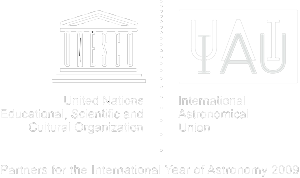Autumn is the season of colours: red, yellow and orange leaves are falling from the trees and in the sky are rainbows! You can make a rainbow at home with the activity below.
Dr. Seahorse Creates Rainbows
 Brief Description
Brief Description Materials
Materials-
A shallow bucket (or watertight container)
-
A small flat mirror
-
A sheet of white paper
-
Sunshine
 Learning Objectives
Learning Objectives- Explore the way that light behaves and learn that light travels in straight lines but can bend (refraction).
- Learn that sunlight appears white, but actually consists of many different colours which can be separated into a rainbow or 'colour spectrum'.
 Background Information
Background InformationLight is a specific type of energy that travels in straight lines and is made up of electromagnetic radiation. Unlike most other forms of energy, light can be detected by the human eye. Light can move very fast, at about 300,000 kilometres per second. Faster than anything else in the Universe. On Earth, the main source of light is the Sun. But light also comes from other sources, such as fires and light bulbs. Regardless of its source, light always travels in straight lines and always at the same speed in open spaces.
Although sunlight seems to be white, it is actually not. It consists of all kinds of colours that, when mixed together, form the colour ‘white’. In this activity these colours are unravelled by the water between the mirror and the surface. Light travels in straight lines, and when a beam of light travels from the air to the water, it bends a little. This bending is called ‘refraction’. It bends even more when it travels back from the water to the air. Some colours bend more than others. Therefore, different colours reach the paper at different positions. The order of the colours of ‘broken white light’ is always the same. This is called the ‘colour spectrum’. You can see the colour spectrum when you look at a rainbow: red, orange, yellow, green, blue, indigo (purple/blue) and violet. Rainbows that you see in the sky are formed by drops of rain that bend sunlight.
 Full Activity Description
Full Activity DescriptionStep 1
Fill the bucket with water.
Step 2
Make sure the sunlight falls on the water by putting it near a window or outside.
Step 3
Lay one side of the mirror on the bottom of the bucket and the other against the side of the bucket. The reflective side should be pointing upwards.
Step 4
Now hold the sheet of white paper in front of the mirror at a small distance so it catches the sunlight that is reflected by the mirror.
Step 5
Move the mirror a bit with your free hand so it reflects the sunlight towards the paper sheet. Make sure that the mirror still touches the bottom of the bucket. Do you see what happens on the sheet of paper? (Image 1)



 Keywords
Keywords Connection to National Curriculum
Connection to National Curriculum Source
Source License
License Attachments
Attachments Downloads
Downloads


